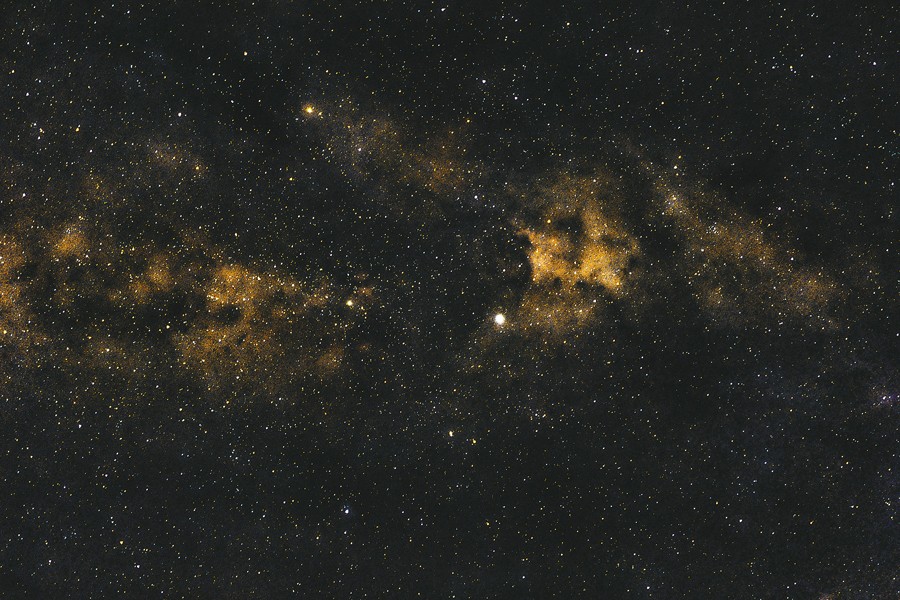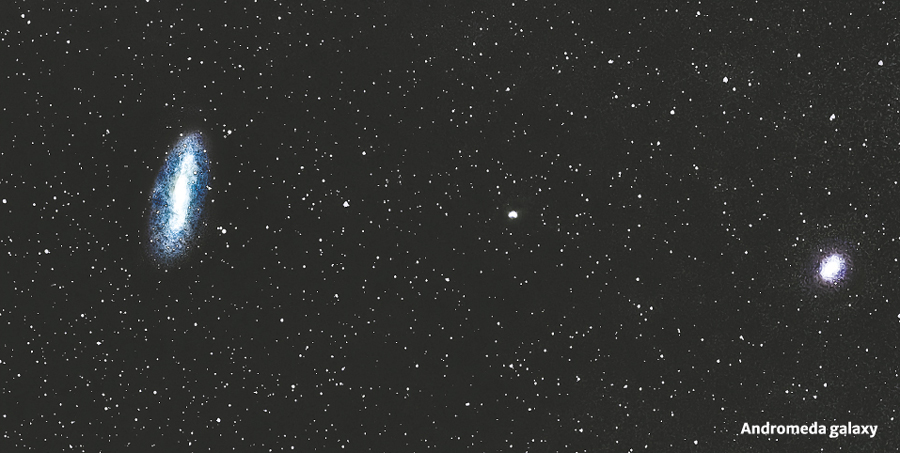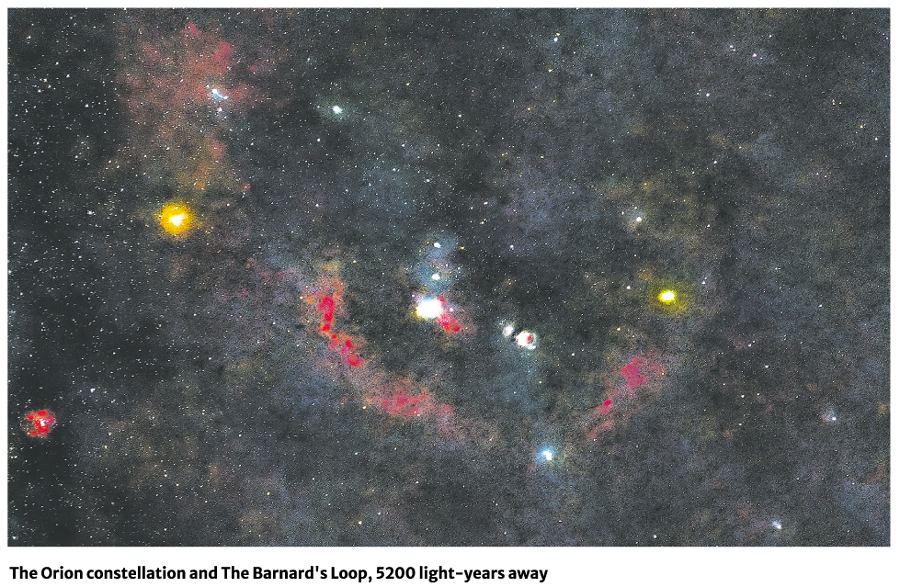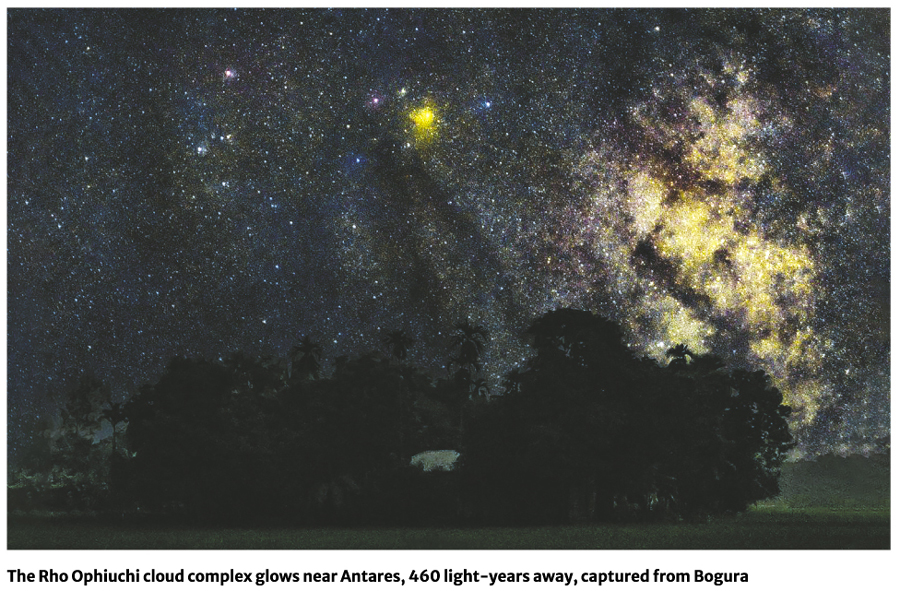
Published :
Updated :

Does the night sky ever gaze at us? Does the Milky Way Galaxy ever want to reveal its presence by radiating its light? Late at night, when the city has gone quiet and many people are asleep at the end of a tiring day, a young man patiently waits on a rooftop or in a field, aiming his mobile phone at the sky to photograph intricate details of the vast universe.
Astronomers use expensive telescopes to take such pictures. These telescopes have state-of-the-art sensors, ultra-sophisticated lenses, and modern technology. They accurately capture stars, constellations, and galaxies that are light-years away.
But Naqib Ifsan, a first-year student at Government Azizul Haque College in Bogura, does not use this high-tech approach. With just a simple mobile phone and its lens, he has captured countless mysteries of the universe. He has photographed the enchanting glow of the Milky Way, the planet trails resulting from the motion of the planets, Venus appearing in proximity to the moon, and the flashes of comets - images that we believe can only be captured with huge telescopes used by astronomers.
Naqib has accomplished this incredible feat repeatedly. His pictures prove that capturing the beauty of space is not limited to the use of expensive equipment but also possible with passion, perseverance, and creativity.
It all started when Nakib took a few pictures of the starry sky with his old phone. There was nothing special in those, but a tiny line of light and darkness caught his eye, sparking an intense curiosity in him. He questioned how it was possible to capture what is invisible to the human eye with just the small lens of a phone.
To find the answer, he scoured YouTube videos and journals and learned that mobile phones also have a technology called long exposure. This technology can cause light to accumulate in the camera sensor second after second, making it possible to capture the invisible beauty of the universe.
That marked the beginning of a gruelling pursuit, which involved patiently waiting on rooftops with his phone on quiet nights. Doing astrophotography in a city of light pollution was like a battle as it required him to determine when and where the sky would be clear, where the level of light pollution would be low, and when there would be no moonlight.
These assessments took him to places as far away as Kishoreganj and Manikganj. The darkness of the night, fog in winter, and mosquito bites could not stop him. But technology alone was not enough as he needed a great deal of patience and a close relationship with the night sky. He had to spend four to five hours on every photo, carefully rotate the tripod by hand, and remotely reframe the mobile camera.
Sometimes, he captured 80-90 frames with a 20-second exposure. At other times, he combined more than 50 photos with dark, flat, and bias frames to reduce noise, as well as unwanted lights and spots. He used Adobe Photoshop and Adobe Lightroom to put the finishing touches to the images. He once spent more than five hours at a stretch to take a Milky Way photo.
His pictures reflect not only technological efforts but also art. When the Orion Nebula appears at dawn, he sees it not just as a cloud of coloured gases but a type of cosmic flower garden. To him, the Lagoon Nebula is not just a birthplace of stars but a vast canvas of light and darkness where the universe has applied its brushstrokes.
These pictures stun people even more because their elements are not visible to the naked eye. Nakib told The Financial Express, "When I first took the picture and told my mother there was a red glow in it, I felt like this was not just an image but an experience in and of itself."
Although the tools he uses seem ordinary, they produce magical outputs when the right technique is applied.
Some of his friends could not believe the pictures were taken on a mobile phone and said those were created using artificial intelligence. But in reality, every picture is a testament to long nights of work, as well as fingers getting cold and sweaty.
"If someone does not believe me, I am convinced that I did it right because it is not easy to capture the sky so closely with just a mobile phone," he said.
The lack of big equipment to do this challenging work does not hold him back. He said, "If you can capture the sky with what you have at your disposal, there are no obstacles to how big you can dream." His words are a reminder to the young generation that instead of becoming slaves to technology, they should learn to make it their companion.
He dreams big. He wants to travel to different parts of the country and the world to capture the Milky Way more accurately in the dark sky from a quiet and rural environment. He also wants to make tutorials to teach youngsters that mobile phones are not just for selfies but can also be used to capture the wonders of the universe. He believes his dream will one day take him to the global stage.
Gazing at the night sky is like opening a window to cosmic history. The light we see today may have come from a star thousands of years ago. Nakib's pictures are not just images; they are also frozen moments of this long past.
Every picture reflects a journey of billions of years and deepens the questions we have about our existence. With his astonishing photographs, Nakib reminds us that even with the simple tool of a mobile phone, capturing the secrets of the universe is within our reach - and its light flows through us all.
mirajshawon28@gmail.com


 For all latest news, follow The Financial Express Google News channel.
For all latest news, follow The Financial Express Google News channel.